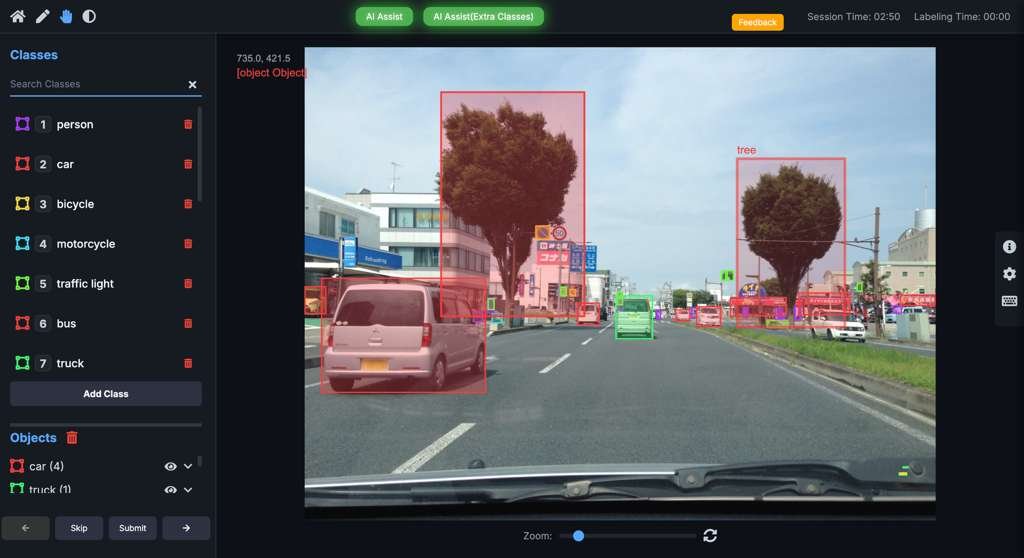Image Annotation
Introduction
Every successful computer vision model — whether it’s powering autonomous driving, medical image analysis, or retail search engines — relies on one thing: high-quality image annotation. Annotation transforms raw images into structured training data, giving AI systems the foundation to detect objects, classify scenes, and interpret the world around them.
Without annotated datasets, even the most advanced neural networks fail. That’s why image annotation and data labeling have become mission-critical for industries scaling AI.
Why Image Annotation Matters in AI
Object Detection & Recognition
Through bounding boxes, polygons, and segmentation masks, datasets enable models to identify and classify objects such as vehicles, animals, and products — essential for applications like autonomous vehicles, drones, and smart cameras.
Facial Recognition & Emotion Analysis
Annotating facial landmarks empowers systems for identity verification, biometric security, and sentiment detection. These datasets fuel everything from secure mobile authentication to AI-driven healthcare monitoring.
E-commerce & Retail Applications
Product image labeling improves search results, recommendation engines, and visual discovery tools, creating personalized shopping experiences and driving revenue for online marketplaces.
Manufacturing & Quality Control
Annotated datasets help AI spot defects, missing parts, or irregularities on production lines, reducing waste and ensuring consistent quality at scale.
Content Moderation & Social Media
Image annotation enables automated content moderation, training models to detect harmful or inappropriate images across platforms — keeping online spaces safer while reducing manual review costs.
Aspect | Manual Annotation | AI-Assisted Annotation |
Accuracy | Human annotators draw bounding boxes, polygons, or segmentation masks with high precision. | AI pre-labels objects; humans refine. Improves dataset quality and consistency. |
Speed | Time-consuming for large datasets. | AI-driven annotation tools label thousands of images in minutes. |
Scalability | Difficult to scale manually. | Easily scales with automation plus human-in-the-loop review. |
Cost | Expensive due to labor-intensive work. | More cost-effective, reducing repetitive annotation tasks. |
Use Case | Best for niche or subjective datasets (e.g., fashion styles, cultural context). | Best for large datasets requiring speed, accuracy, and uniformity. |
Emerging Trends in Image Annotation
- Domain-Specific Annotation: Tailored taxonomies for medical imaging (DICOM, NIfTI), geospatial datasets (GeoTIFF, SAR), and LiDAR point clouds.
- Synthetic Data & Data Augmentation: Generating additional training samples for rare edge cases.
- Ontology-Driven Workflows: Using structured ontologies to ensure consistent labeling across datasets.
- Regulatory Compliance: Annotation pipelines designed for GDPR, HIPAA, and ITAR compliance in sensitive industries.
- Active Learning & Human-in-the-Loop: Closing the loop between AI predictions and annotation refinement for continuous model improvement.
Conclusion
Image annotation is the backbone of computer vision. By combining manual expertise with AI-assisted annotation tools, businesses can build scalable, accurate, and cost-efficient datasets. Whether you’re working on autonomous vehicles, healthcare imaging, geospatial AI, or retail product search, success depends on the quality of your annotated data.
Companies that invest in robust image labeling workflows today will accelerate their AI adoption tomorrow — moving faster from research to real-world deployment.

